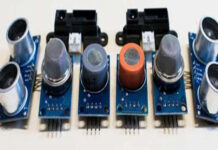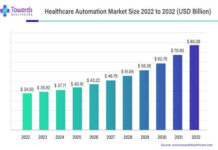The increasing penetration of tablet computers and smartphones, rising emphasis of vendors on cost reduction, and growing adoption of augmented reality (AR) and virtual reality (VR) technology in enterprises will drive the global AR and VR market at a CAGR of 42.9% during the forecast period of 2020–2030. These factors will increase the size of the market from $37.0 billion in 2019 to $1,274.4 billion in 2030. Additionally, there is a surge in the adoption of the technologies in the tourism, gaming, entertainment, healthcare, and education sectors.
Smartphones and tablet computers offer an ideal platform for AR and VR, which is why these devices are becoming a popular hardware interface for AR and VR for these technologies. As the number of smartphone users is increasing, the usage of AR and VR applications is also surging. Considering the resourcefulness of these devices, enterprises operating in the AR and VR industry are launching their products through different mobile application stores.
Furthermore, vendors’ attempt to reduce the cost of their products will drive the AR and VR market growth during the forecast period. Technological innovations in software and hardware development will reduce the cost of AR and VR devices soon. Market players are offering software development kits (SDKs) to application developers at reasonable prices. This will widen the application base of these technologies, thereby helping in the reduction of the cost of the products in the future. The reduced cost will lead to the increasing adoption of these technologies, especially in developing countries.
The AR and VR market segments include offering, application, type, and device type. The device type segment is bifurcated into AR devices and VR devices, of which the AR devices category is further divided into handheld devices, heads-up displays (HUDs), and head-mounted displays (HMDs). Among these, HMDs registered the maximum sales during the historical period of 2014–2019 owing to technological developments, the growth in the demand for lightweight displays, and rise in the number of patented products of the companies operating in the market.
During the historical period, the North American AR and VR market generated the highest revenue, and the region is expected to retain its dominance during the forecast period. This can be attributed to the presence of multiple consumer electronics companies in the U.S. Additionally, the regional market will be driven by the growing application of these solutions in the healthcare and e-commerce industries. For instance, AccuVein Inc., a U.S.-based company offering medical imaging solutions, provides AR technology to assist nurses and doctors in locating veins in patients.
The fastest growth during the forecast period will be demonstrated by the Asia-Pacific (APAC) AR and VR market. The industry is still in its nascent stage in the region, but with a growing population of youth and rising popularity of AR-and-VR-enabled gaming, the market will grow. The technological revolution has already begun creating a considerable buzz among the tech-savvy consumers in APAC countries. Keeping up with this trend, industry players are launching numerous AR-and-VR-based products in India, China, South Korea., and Japan. The increasing usage of the technologies in multiple sectors will, thus, boost the industry growth in the years to come.
















